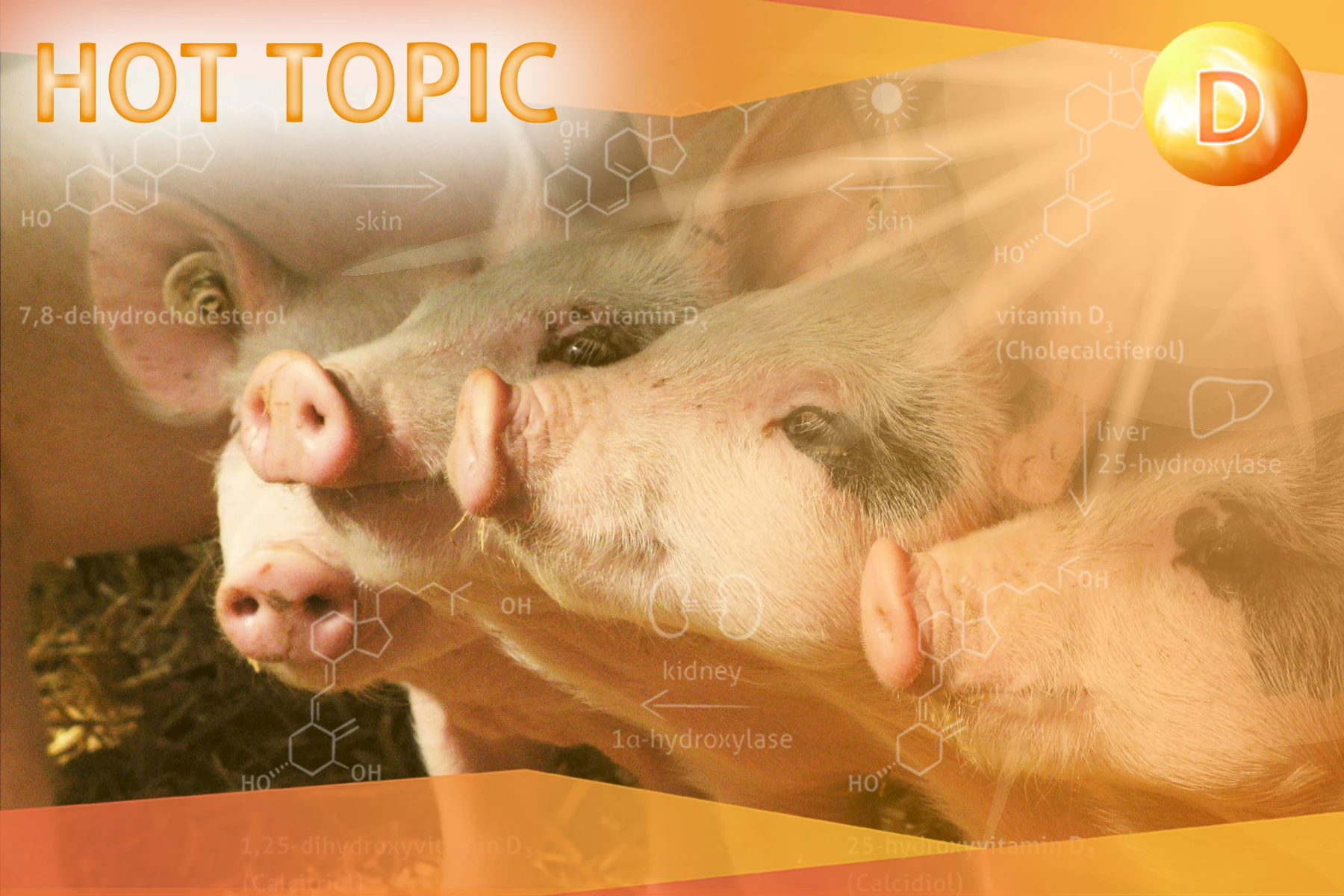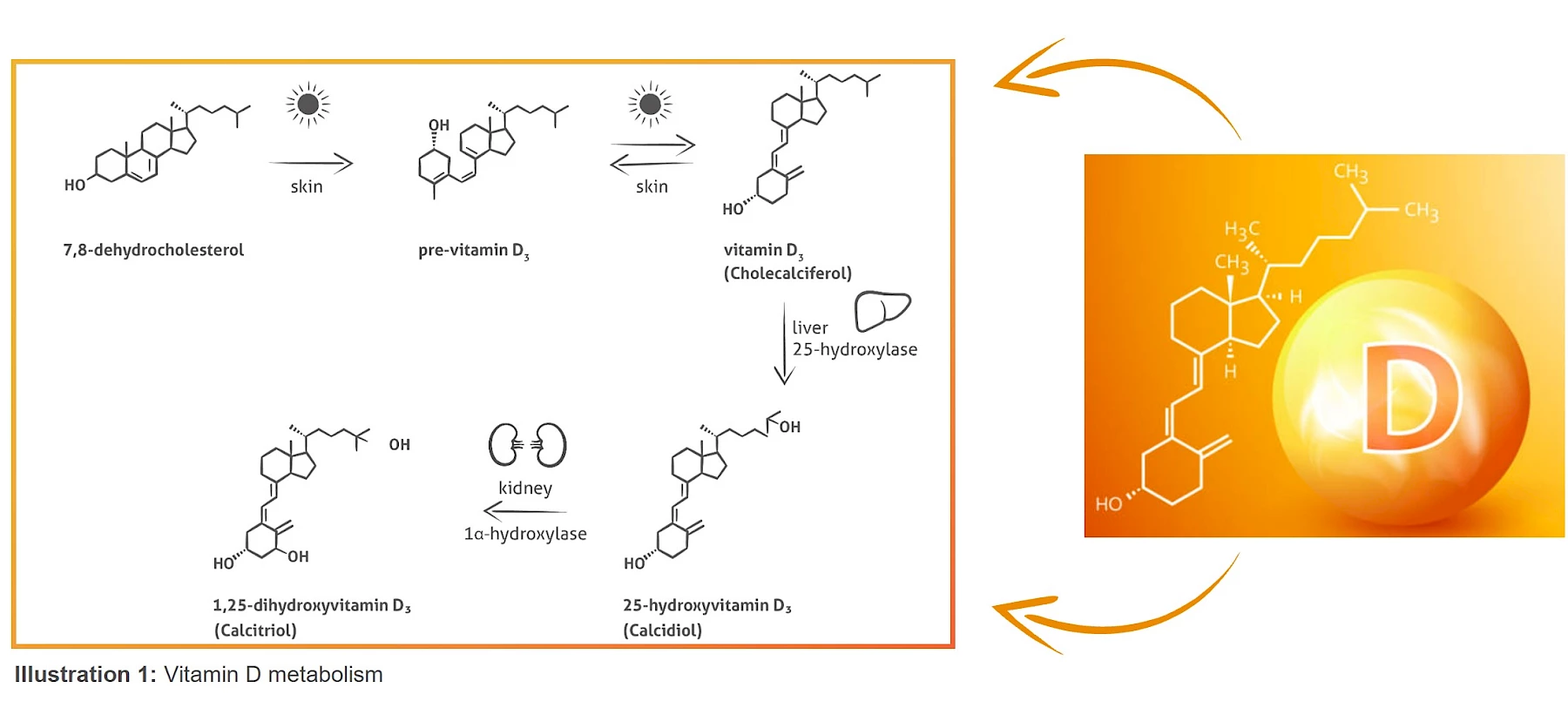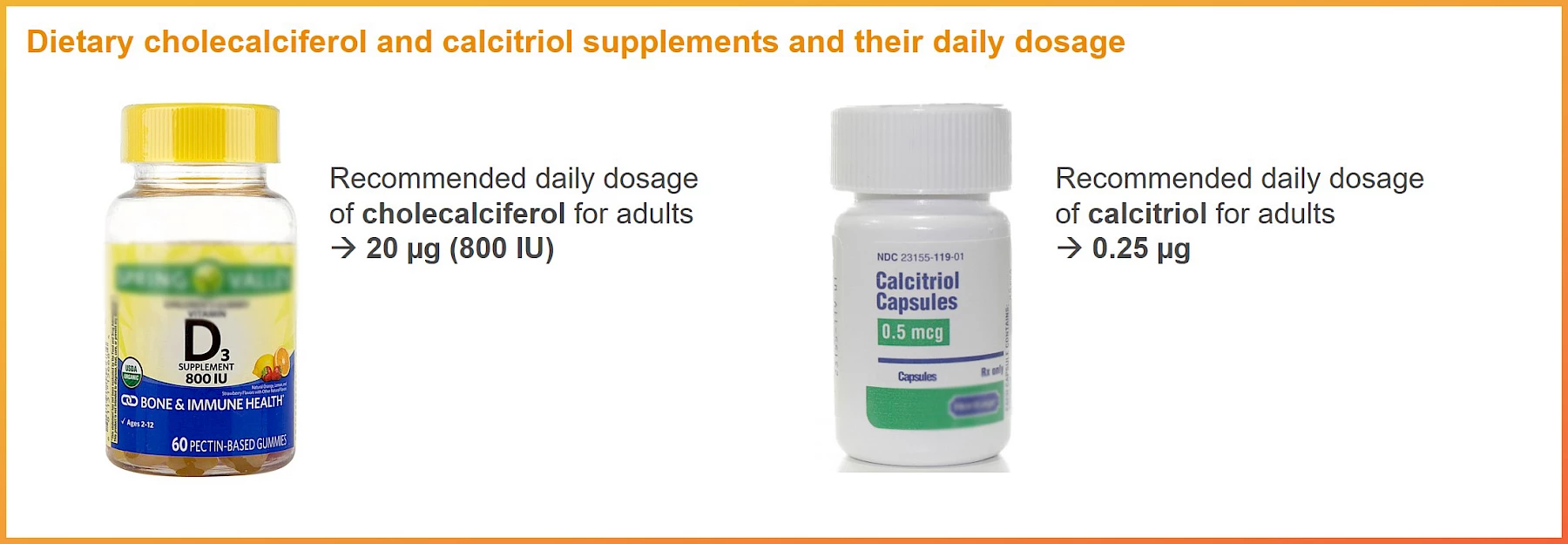
The role of vitamin D, its forms and how they are compared
Vitamin D – The “sunshine” vitamin
Vitamin D belongs to the essential vitamins and is involved in many important metabolic processes in the organism. It is commonly known as the sun vitamin, because it is produced in the skin by sun radiation.
The vital functions of vitamin D in the organism are carried out by its active form, calcitriol, which modulates the active calcium absorption from the intestine, its transport to target cells and storage in the bones. Vitamin D deficiency leads to disturbance of the calcium metabolism with consequences such as decreased bone density and reduced muscle contractions.
In addition, vitamin D is of great importance for the immune system. For example, there is a striking correlation between vitamin D status and the frequency of severe disease progression of a Sars-CoV-2 infection. Current evidence suggests that vitamin D supplementation can reduce the risk of COVID-19 and its severe outcomes, including mortality. Farm animals don’t get COVID-19, however, they are exposed to numerous other pulmonary pathogens and are susceptible to diseases which inevitably lead to a decrease in performance.

Vitamin D in animal nutrition and feed
Vitamin D is an essential vitamin and is usually administered to livestock feed via the premix. The dosage depends on the animal species, production stage, legal limitations and type of the additive. The addition to feed is extremely important, because livestock are usually kept in closed systems and are not exposed to sunlight. Furthermore, their need for nutrients, including vitamin D, varies depending on the performance level and the biological availability of nutrients. For example, sows have a high demand for nutrients during lactation, and laying hens have different needs at the beginning of the laying period than at the end.
The quantity of vitamin D is measured in international units (IU) per kilogram. However, only cholecalciferol (vitamin D3) can be reliably expressed in IU, because the different forms of vitamin D (see Illustration 1) vary in their biological activities. This makes it difficult to compare products based on different vitamin D forms in terms of the quantity they contain. This Hot Topic will explain in detail which challenges this lack of comparability entails in practice.

The specificity of vitamin D, its forms and how they are measured
International Units – what are they and how are they measured? A critical overview.
International Units (IU) are used to compare different metabolites of metabolically active substances, such
as vitamins or hormones, which differ in their biological activity. This can be illustrated using the example of vitamin A:

Usually, vitamin D is also expressed in IU. However, the same issue as in vitamin A is encountered regarding vitamin D. The three naturally occurring forms of vitamin D are cholecalciferol, calcidiol and calcitriol (see Page 1, Illustration 1). The mass-activity relation is defined only for cholecalciferol, for which 1 IU equals to 25 ng. Generally, the activity of calcidiol is regarded equal to cholecalciferol and 25 ng of calcidiol are therefore also considered 1 IU of vitamin D.
However, calcitriol, the active form of vitamin D, is not measured or quantified in IU. Scientists have attempted to compare the biological activities of calcitriol, cholecalciferol and calcidiol in order to formulate an equation for IU as seen in the example of vitamin A. The biological activities of the metabolites were measured in vitro, by means of bioassays. Unfortunately, different methods yielded very different results (Table 1). Consequently, deriving a reliable relation between the activities of different forms of vitamin D is not advisable and likely impossible.
The common practice of using IU instead of metric units to indicate vitamin D content in nutritional products therefore often leads to confusion. Considering the variable results of biological activity measurements, different vitamin D products cannot be compared in international units. For this reason, newer international conventions demand mass units (μg/kg) instead of activity units (IU/kg) to be used in dosage recommendations for animal feed.


The role of vitamin D, its forms and how they are measured
Calcitriol cannot be expressed in IU – what are the practical consequences?
The previous section illustrated the difficulty of comparing different forms of vitamin D based on their biological activity. Consequently, while cholecalciferol and calcidiol are commonly measured in IU, there is no reliable equation to express calcitriol in IU. Nevertheless, there are nutritional supplements which contain calcitriol. The recommended daily dosages of these products are expressed in metric units (µg). The organism reacts quiet differently to the intake of calcitriol versus the intake of cholecalciferol. Therefore, when breaking down the quantity of cholecalciferol from IU to µg, the differences between the recommended daily intake of both substances are considerable, as shown in the example below.


What does this mean for a vitamin D supplement like Active D?
The product Active D contains calcitriol-glycosides and additional secondary plant metabolites. One question which often arises is how many IU of vitamin D are contained in Active D. As shown in this Hot Topic, this question cannot be properly answered. Instead, the amount of calcitriol in Active D is indicated in mg/kg.
The dosage recommendation of the product was determined by evaluating scientific papers, species requirements, scientific and field trials. Active D should be supplemented to the feed along with the vitamin D contained in the premix. By doing so, in critical phases, when the demand of calcium increases or the metabolization of vitamin D through liver and kidneys is strained, the supply of vitamin D and its analogues is secured. This offers the possibility of an optimal supplementation of vitamin D in all phases of production.

Download the pdf version of the Hot Topic written by our expert Murat Devlikamov, Product Manager Active D.
Download the HOT TOPIC (PDF) here >>

Murat Devlikamov studied Agricultural Sciences at the University of Giessen, Germany, and did his Master’s thesis on broiler nutrition. At Phytobiotics, he is the Product Manager of the plant-based product Active D. Murat conducts scientific research on targeted vitamin D supply to create practical solutions for animals in periods of high metabolic challenge.
Contact our experts or send us a message. We will contact you as soon as possible.